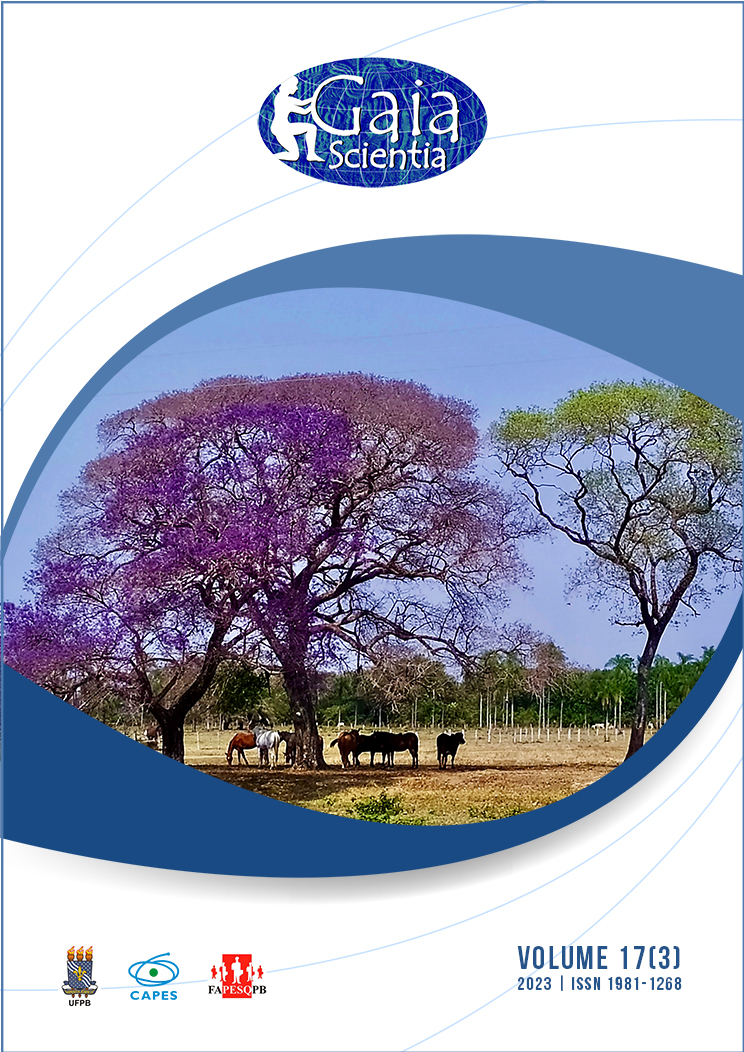Testudines Batsch, 1788 da coleção Awá-Guajá, estado do Maranhão, Brasil
DOI:
https://doi.org/10.22478/ufpb.1981-1268.2023v17n3.67518Resumo
Uma assembleia faunística proveniente de depósitos de descarte da comunidade Awá-Guajá, localizada na Amazônia do Estado do Maranhão, foi examinada do ponto de vista tafonômico e taxonômico com finalidade de reunir dados para interpretação dos processos atuantes (físicos e antrópicos) na sua formação. O principal alvo das pesquisas foram os Testudines, um dos vertebrados mais comuns encontrados na coleção Awá-Guajá. O material analisado foi resultado de caça pela comunidade, constituído de 4834 partes ósseas, representadas por carapaças, plastrões e ossos apendiculares e axiais em diferentes níveis de preservação e evidência de atividade humana. Foram identificadas três espécies; Rhinoclemmys punctularia (Aperema), Chelonoidis denticulata (Jabuti-tinga) e Chelonoidis carbonaria (Jabuti-piranga). O material apresentou diversas características que indicam seu uso para fins alimentícios, como cortes em regiões entre a carapaça e o plastrão e evidências de queima.










